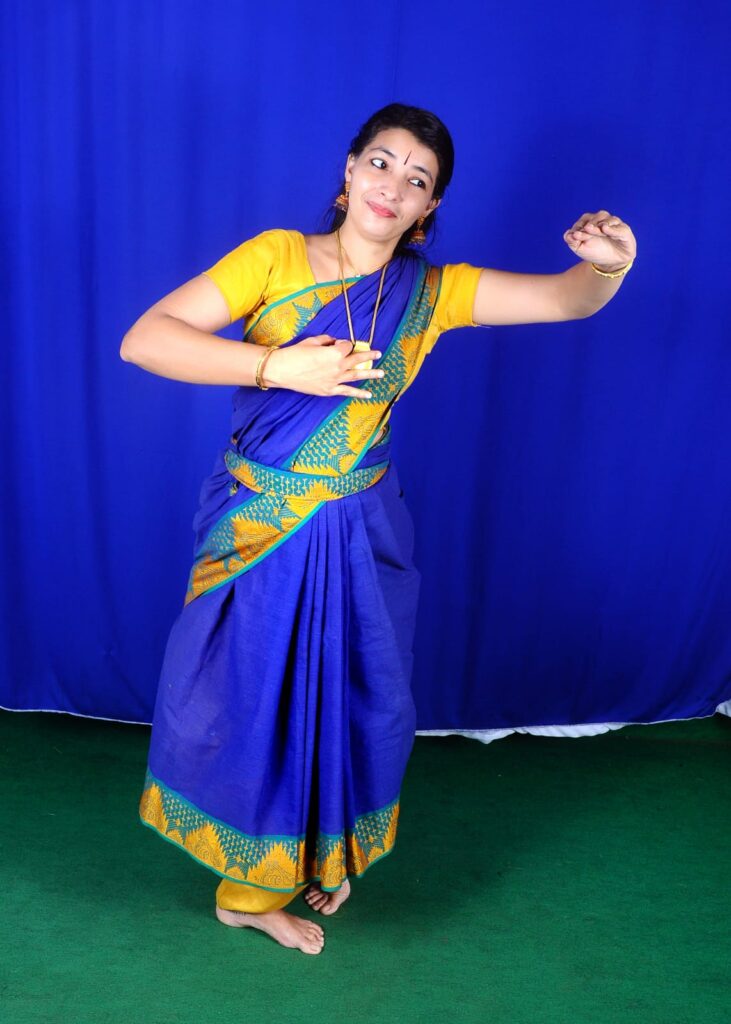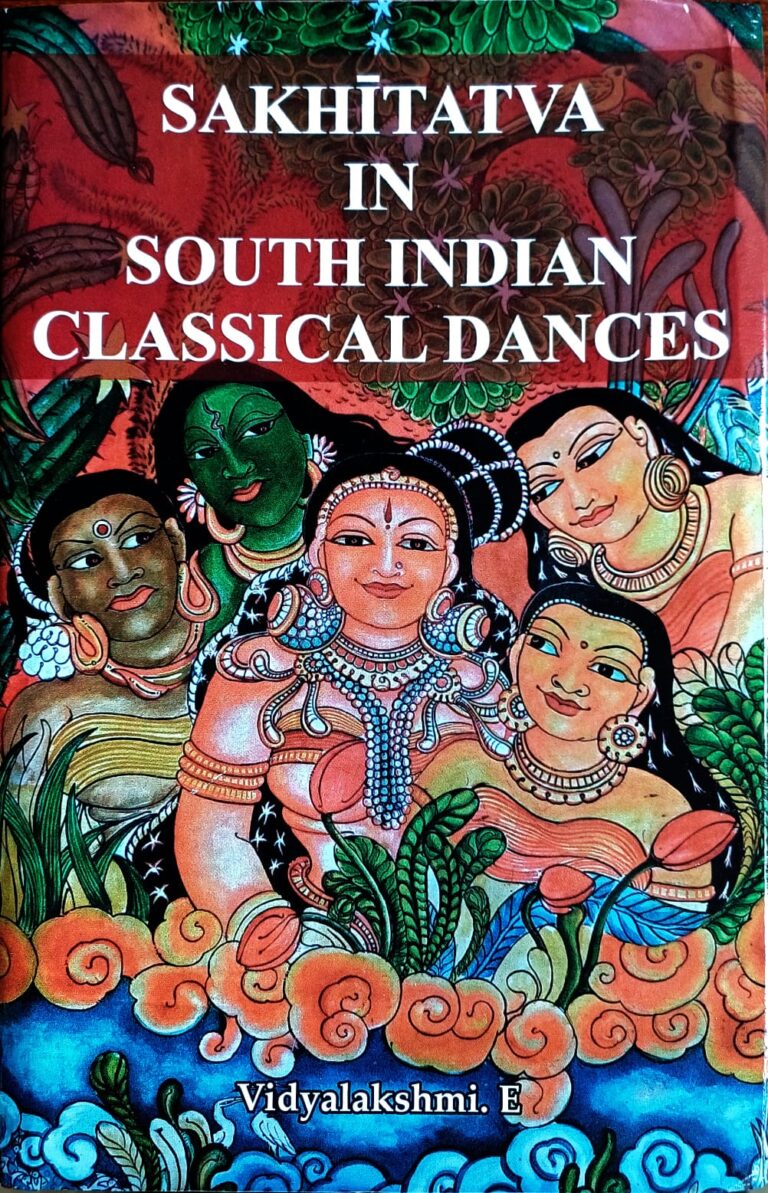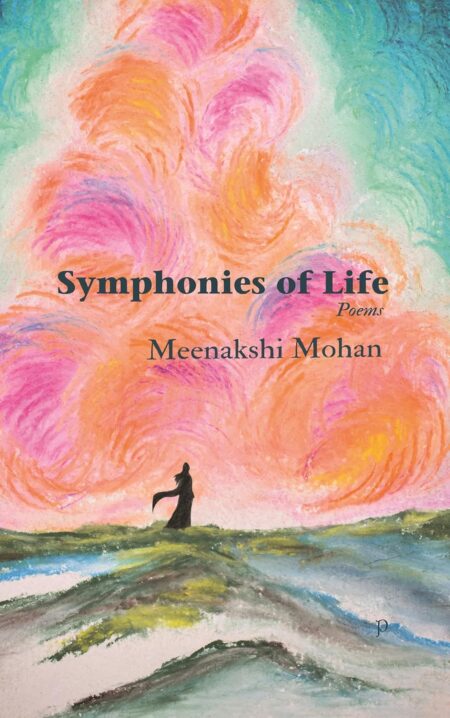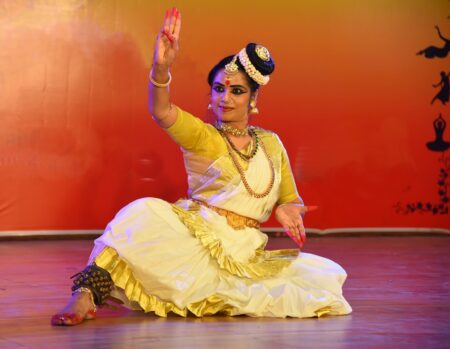“Sakhitatva in South Indian Classical Dances” by E Vidyalakshmi is an unparalleled study on Sakhi that enriches the understanding of Indian classical dance and literature.
‘Sakhi’ is one of the most brilliant manifestations of Indian poetic genius who is the irrepressible friend of the nayika who permeates almost all types of literature throughout the length and breadth of India. Admittedly a detailed study of this character has been nil so far. The book under review is perhaps the first to make a comprehensive study of Sakhi.
Divided into six chapters, the book delves deep into the evolution, classifications, nature and duties of this character not only in the South Indian classical dances but also in literature at a pan Indian level. What impresses the reader is the innumerable treatises the authour Dr E Vidyalakshmi has referred to for the study.
The first chapter ‘Introduction’ is elaborate and provides a synospsis of the contents discussed in the subsequent chapters. Though basically Sakhi is the female companion of the protagonist, there are instances when she assumes a prominent role as that of the nayika. This is corroborated with examples from songs of Sangam period.
The second chapter is an all-embracing description of evolution of Sakhi characters through history. The chapter throws much light on the depth of Vidyalakshmi’s research. Here she has analysed role of Sakhi in Sanskrit literature beginning from Rig Veda. Other treatises referred are Amarakosa of Amarasimha, Natyasastra of Bharata, Sringara Tilaka of Rudrata, Dasarupaka of Dhananjaya, Bhavaprakasa of Sarada Tanaya, Sraswathikantathabharana of Bhojaraja, Rasamanjari of Bhanudatta, Sahithyadarpana of Viswanath Kaviraj, Rasarnava Sudhakar of Sinhabhupala and Ujjvala Nilamani of Rupagoswamy.
As for the books in Tamil literature, they include Tolkapyam, Akattinal Iyal, Kalaviyal,Karppiyal, Poruliyal, Akam kritis, Chitrilakkiyangal, Kuttanool and Thirukkural – all belonging to the Sangam era. The chapter concludes with a comparative study of Sakhi in Sanskrit and Tamil literature which is highly didactic.
Vidyalakshmi points out that while Nayikas have been classified as Mugdha, Madhya and Pragalbha, Sakhis were not classified though their role was equally important. This lacuna has been addressed by her in the third chapter.
Innovative classification
She has evolved a classification quite innovatively by perusing through Natyalakshna Granthas and Natyalakshya Granthas. Accordingly, Antaranga and Bahiranga Sakhis are based on interpersonal relationship; Uttama, Madhyama and Nihina based on karma; Purvaja, Sahaja, Anuja and Aagantuka based on acquaintance. Interestingly she has explained the hand gestures of Sakhis and the plates given to explain them are laudable.
Analysis of the books on dramaturgy in Sanskrit and Tamil is attempted in chapter four. A detailed study of the Sakhis in support of the categorization in the previous chapter is attained through the works of Kalidasa and Bhasa. While expatiating on the Sakhis in Tamil plays, the concept in Kuravanchi is discussed at length. The character Kuratti in this work has been argued to belong to the Antaranga and Aagantuka categories. Commendably, the study of Kuratti is exhaustive and she has been described as a Sakhi with social commitment.

A demarcating feature of Vidyalakshimi’s approach is the study of the historicity of each topic. Chapter five, in which she focuses on the Sakhis in South Indian classical dances, she delves deep into the contributions of the Maratha kings including Nirupanas. The Nirupana, “Sakine Naayakisa” receives an all-embracing treatment. She dwells on the evolution of the Bharatanatyam Marga thereafter and the composition taken for this purpose is the varnam “Sarojakishro vibhuni samayamuna” in Kamboji and adi. Varnams composed by Papanasam Sivan, Vaideeswaran Koyil Subbharama Iyer and Dandayudhapani Pillai also are discussed. Padas are also scrutinized for identifying the category of Sakhis. This includes those of Kshetrayya and Swatithirunal.
The concluding Chapter elaborates on the camaraderie that exists between the Sakshi and the Nayika. Role of Chitralekha in Ushaparinayam, Sudhamani in Manimekhala, Hira in Ulloor Prameswara Iyer’s poem Hira and Madhavai in Kumara Aasan’s Leela has been dwelt in detail to explicate this phenomenon.
Impact on South Indian classical dance
The authour points out that Sakhas, the male companion, though very few compared to Sakhis in dance, the Sakhya bhava is one of the aspects of bhakhti. The devotee here takes Lord as his friend. This point has been further clarified by the expression, ‘Sankalpika Sakyam’ which attributes qualities of Sakhi or Sakha both in animate and inanimate beings. Jatayu in Ramayana, the beetle that appears in the Sindhubhairavi composition of Suddhanadha Bharati, ‘Gaanaringaram’ etc have been pointed out as striking paradigms of Sankalpika Sakhi.
Judging by all parameters, the book is a momentous work among the publications on dances. The enormity of the work is indication enough of Vidyalakshmi’s commitment to ferret out all aspects pertaining to the character of Sakhi. Further, it is a treasure trove for the entire dance fraternity. She has avoided Geetagovindam deliberately lest the work should be voluminous.
The cover picture in the mural style is unique. One feels, the editing should have been stronger.
Vidyalakshmi is presently on the faculty of Bharatanatyam in the Lasya College of Fine Arts, Payyannur, Kerala.
Authour: Dr E Vidyalakshmi
Publisher: B R Rhythms, Delhi
Email: [email protected]
Price: Rs 1250




